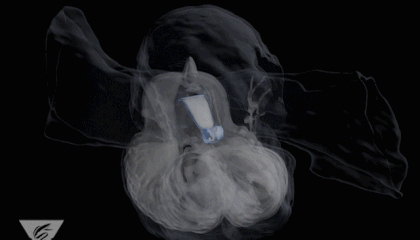Toxic tiger rattlesnake venom advances genetic science techniques

Toxic tiger rattlesnake venom advances genetic science techniques Biologist Mark Margres with an Eastern diamondback rattlesnake on Caladesi Island, Florida. January 26, 2021 The tiger rattlesnake possesses the simplest, yet most toxic, venom of any rattlesnake species. Now new research led by a University of South Florida biologist explains the genetics behind the predator's fearsome bite. The research is published in the journal Proceedings of the National Academy of Sciences. USF biologist Mark Margres and his colleagues sequenced the genome of the tiger rattlesnake to understand the genotype of the venom trait. Despite the simplicity of the rattlesnake's venom, Margres says it is roughly 40 times more toxic than the venom of the Eastern diamondback rattlesnake in Florida. The U.S. National Science Foundation-funded work is the most complete characterization of the venom gene regulatory network to date, the researchers say. The identification of key mechanisms in...














